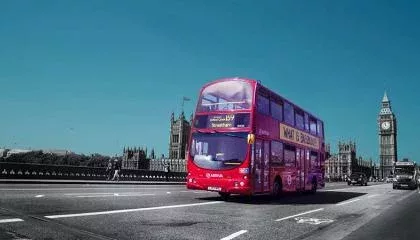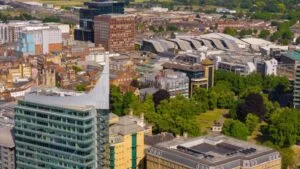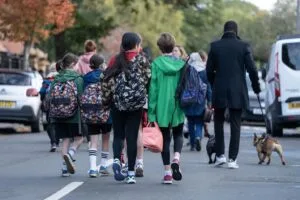New analysis of diffusion tubes at locations across the city, which has been compiled by City Hall has, today revealed that whilst some progress has been made improving air quality in the capital, every London borough is breaching World Health Organization (WHO) guidelines for nitrogen dioxide.
Locations across the capital are monitored to gauge pollution levels. As recommended under the statutory London Local Air Quality Management framework, 31 of the 33 London boroughs used diffusion tubes in 2021 to monitor a large number of locations in their area as these provide a low-cost way to monitor average levels of toxic nitrogen dioxide. Two boroughs – Bexley and Harrow- have not installed these local air quality monitors despite being recommended to do so by the Government and the Mayor in 2021. City Hall has now compiled the latest data from 2021 – this is the first time the latest data has been brought together to demonstrate the London wide picture of air pollution from these local sensors.
Despite recent improvements in air quality in London due to measures introduced by the Mayor, all locations monitored in these 31 boroughs are exceeding global WHO recommended limits for deadly nitrogen dioxide. In total, 14 boroughs have five or more locations monitored that also exceed the less stringent UK legal limit for nitrogen dioxide. In Brent, Croydon and Merton, more than a quarter of the locations monitored found the air to be breaching legal limits.
The data also shows a very similar average pollution concentration in inner and outer London – showing the need to take action right across the city.
This data is further evidence that more needs to be done to reduce toxic air in London. The expansion of the Ultra Low Emission Zone (ULEZ) London-wide from August 2023 will help improve air quality for a further 5 million Londoners.
Thanks to pioneering initiatives, such as School Streets, the Low Emission Zone and the ULEZ, air quality in London is improving, however there is still a lot to do.
This data will also be accessible to local air quality campaigners looking at pollution in their own areas.
The Mayor of London, Sadiq Khan said: “London’s toxic air is leading to children growing up with stunted lungs and causes around 4,000 premature deaths a year – with the greatest number of attributable deaths in London’s outer boroughs.
“This data is yet more shocking proof that London’s air quality has been in serious breach of the recognised global standard – and it’s a problem in every single part of the capital.
“I have made tackling toxic air pollution a priority since I was first elected in 2016, and we have made huge progress since then. However, I am determined to do all I can to ensure that children now and the next generation of Londoners can grow up breathing cleaner air – wherever they live in the capital.
“This is why I made the difficult decision to expand the ULEZ London-wide – to help save lives and to give all Londoners the right to breathe cleaner air.”
Hirra Khan Adeogun, Head of Car Free Cities at climate charity Possible, said “This data shows just how much work there is still left to do on driving down air pollution and emissions in London. The ULEZ expansion will certainly help by making our streets healthier and greener but we need to go further. Dedicated cycle lanes, road user charging, and investing in public transport, these are things that will help secure our climate and secure the long-term health of Londoners.”
Since 2016, the Mayor has introduced a wide range of policies to target toxic air. This includes introducing the world’s first Ultra Low Emission Zone, cleaning up London’s bus and taxi fleets, and implementing new planning guidelines like Air Quality Positive and Neutral to ensure new developments minimise pollution.
The WHO clean air targets reflect the best available health evidence and are now recognised globally as the targets that should be met to protect public health.
Ahead of Clean Air day on the 15 June, the Mayor is giving young Londoners the chance to show everyone exactly what clean and healthy air means to them. The Clean Air Day challenge, which is open from now until the end of May 2023, is open to London school children aged 4 to 14 and asks them to create artwork, with the chance to have them featured as part of this year’s Clean Air Day celebration. The chosen posters will be featured on posters across London or the Mayor of London’s social media channels.
Larissa Lockwood, Clean Air Director at Global Action Plan says: “The fact that every London borough falls short of the WHO’s global standards for air quality is appalling. This latest data should act as rocket fuel for urgent action to tackle the Capitals toxic air.
“We have seen the power of Clean Air Day to unite a movement, to bring confidence to talk about the importance of tackling air pollution and to push for change. We applaud the Mayor for giving children a platform to show what clean air means to them, as we know that children are particularly impacted by air pollution. Simple actions – like the Mayor’s Clean Air Day poster challenge – all help to raise awareness and make a difference in improving local air quality as well as normalising grassroots action. We can’t wait to see what the children come up with!”



























